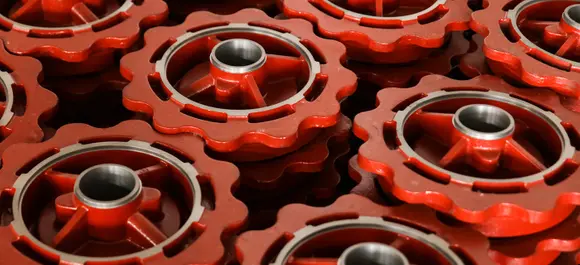Mobile:+86-311-808-126-83
Email:info@ydcastings.com
iron casting
The Art and Science of Iron Casting
Iron casting has been a pivotal method in metalworking since ancient times, used to craft everything from everyday tools to intricate artworks. This age-old practice involves pouring molten iron into a mold to create a specific shape, and it combines both artistic skill and scientific principles. Understanding the intricacies of this process reveals not only its historical significance but also its contemporary applications in various industries.
Historically, iron casting dates back to at least the 5th century BC, with evidence pointing to its origins in ancient China. The method utilized during that time was primitive compared to modern techniques but set the foundation for future advancements. The use of cast iron became particularly prominent during the Industrial Revolution, when the demand for mass production of durable components surged. Iron casting proved to be an efficient and cost-effective way to produce a wide array of items, ranging from machinery parts to cooking utensils.
The process of iron casting begins with the creation of a mold, which can be made from various materials, including sand, metal, or ceramic. Sand casting, one of the most widely used methods, involves creating a pattern in sand that defines the shape of the final product. The pattern is typically made of wood or metal and is used to form a cavity in the sand. Once the mold is ready, molten iron, heated to temperatures exceeding 1,500 degrees Celsius, is poured into the cavity. After cooling and solidifying, the mold is removed to reveal the cast iron object.
One of the key advantages of iron casting is its ability to produce complex shapes that would be difficult to achieve through other manufacturing methods
. This flexibility allows for a broad range of applications, from automotive components to decorative art pieces. The properties of cast iron, such as excellent wear resistance and good machinability, further enhance its suitability for industrial applications. Various alloys and grades of cast iron have been developed to exploit these characteristics, allowing engineers to select the right material for specific needs.iron casting

In contemporary manufacturing, advancements in technology have improved the efficiency and precision of the iron casting process. The introduction of computer-aided design (CAD) software allows for the creation of highly detailed patterns and molds, ensuring a high degree of accuracy in the final product. Moreover, innovations in melting and pouring techniques minimize waste and environmental impact, addressing some of the concerns associated with traditional iron casting.
Despite its numerous advantages, the iron casting industry does face challenges. The need for skilled labor is significant, as maintaining high-quality standards requires a deep understanding of both the materials involved and the casting process itself. Furthermore, the industry must navigate environmental regulations concerning emissions and waste management. As the world increasingly moves towards sustainability, the adoption of greener practices and materials is becoming essential.
Recent trends in iron casting also reflect a growing interest in artistic applications. Many contemporary artists and designers utilize iron casting as a medium for their work, creating unique sculptures and installations that explore themes of industrialization and craftsmanship. This intersection of art and industry not only showcases the versatility of iron casting but also celebrates its rich history and cultural significance.
In conclusion, iron casting is a remarkable blend of art and science, integral to both historical and modern manufacturing. Its ability to create complex, durable objects continues to make it relevant today, while ongoing innovations ensure its evolution in line with contemporary needs and environmental considerations. As we look to the future, iron casting will undoubtedly retain its important place in the world of material production, bridging the gap between tradition and innovation. Whether for practical or artistic purposes, the enduring legacy of iron casting is a testament to human ingenuity and creativity.
-
Why Should You Invest in Superior Pump Castings for Your Equipment?NewsJun.09,2025
-
Unlock Performance Potential with Stainless Impellers and Aluminum End CapsNewsJun.09,2025
-
Revolutionize Your Machinery with Superior Cast Iron and Aluminum ComponentsNewsJun.09,2025
-
Revolutionize Fluid Dynamics with Premium Pump ComponentsNewsJun.09,2025
-
Optimizing Industrial Systems with Essential Valve ComponentsNewsJun.09,2025
-
Elevate Grid Efficiency with High-Precision Power CastingsNewsJun.09,2025











